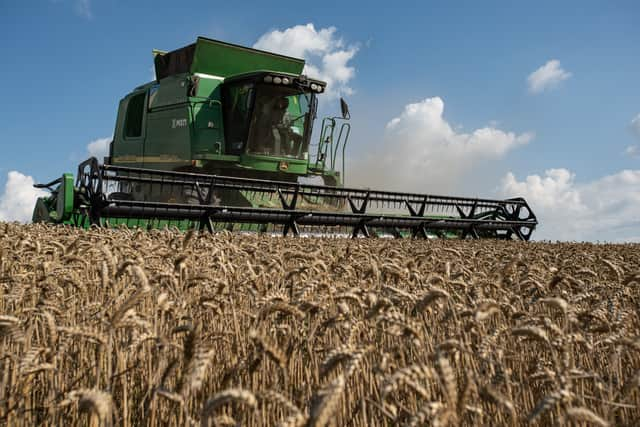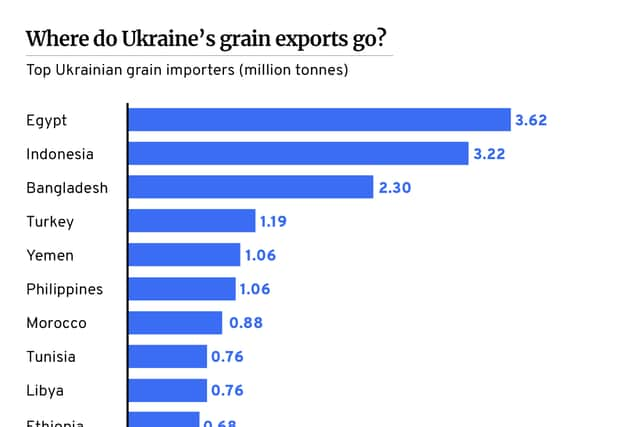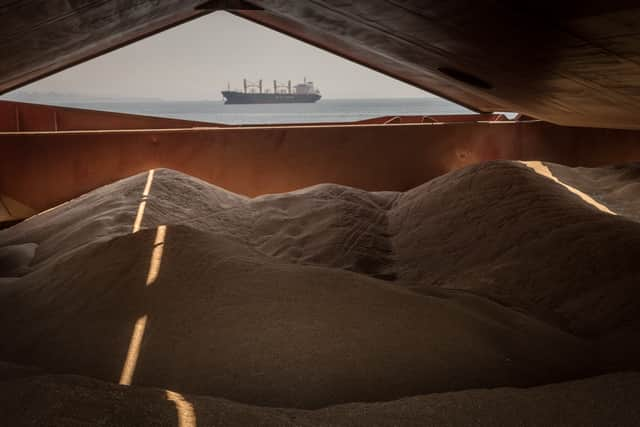Ukraine grain exports: how much comes from Ukraine, what grains do they export, which countries do they go to?
and live on Freeview channel 276
Ukraine has exported nearly one million tonnes of grain this August under a new deal from the United Nations (UN).
From 1 August, Russia lifted its naval blockade of the Black Sea, allowing Ukraine to send supplies through a safe corridor.
Advertisement
Hide AdAdvertisement
Hide AdThe country is one of the world’s leading grain producers, providing 10% of the world’s supply.
The war, which started after Russian troops invaded in February has claimed thousands of lives, displaced millions, caused widespread disruption and triggered a food crisis around the world.
Lack of supply has hiked prices, leaving some regions on the brink of famine.
Whilst Ukraine has started up exports again, supplies are still not at full capacity and are reaching countries at a slower rate than before the war.
Advertisement
Hide AdAdvertisement
Hide AdHere’s everything you need to know about Ukraine’s grain export.


How much grain comes from Ukraine?
Ukraine is one of the largest grain exporters in the world, in 2021 alone, the country harvested 86 million tonnes.
The country is also the leading producer of sunflower oil, accounting for 42% of the world’s supply in 2019.
The war in Ukraine has seen supplies struggle to get out of the country, with the Black Sea route being blocked by Russia.
Advertisement
Hide AdAdvertisement
Hide AdAn estimated 20 million tonnes of grain and maize has been trapped in the country since the war began, with exports for 2022 down 46%.
This has caused supply shortages around the world, driving up prices and leading to fears of famine in Africa and the Middle East.
What grains does Ukraine export?
Ukraine is the leading exporter of grain, maize and sunflower oil in the world.
According to the UN Food and Agricultural Organisation, in 2019 the country exported:
- 42% of the world’s supply of sunflower oil
- 16% of the world’s supply of maize
- 10% of the world’s supply of barley
- 9% of the world’s supply of wheat
What countries does Ukraine export grain to?
Advertisement
Hide AdAdvertisement
Hide AdUkraine exports grain all over the world, with Africa and the Middle East being hit hardest due to the shortage.
According to the African Development Bank Group, the war in Ukraine has caused a deficit of 30 million tonnes of grain, which has seen prices rise sharply.
Yemen and Syria have also been hit hard, with prices for flour and bread doubling.


What is the Black Sea safe corridor?
The Black Sea safe corridor was devised to help enable Ukraine to safely export their grain.
Advertisement
Hide AdAdvertisement
Hide AdEstablished by the UN and the Joint Coordination Centre (JCC), it brings together representatives from Ukraine, Russia, Turkey and the UN.
The corridor began on 1 August, with dozens of shipments making their way through the Black Sea.
Whilst food is finally getting out, exports are down 46% compared to 2021.


In a statement UN Secretary-General António Guterres praised the initiative but said “more needed to be done”.
Advertisement
Hide AdAdvertisement
Hide AdGuterres said: “As the world grapples with food insecurity and high prices, the importance of this Initiative is clear. As increased volumes of Ukraine’s agricultural production are now heading to market by sea, confidence has grown in the food and shipping industries, driving down prices and reducing risk.”
He added: “These are all important first steps but much more needs to be done.
“Across the world, high prices in fuel and fertilizer, climate change and conflict are placing immense pressure on farmers and consumers alike and driving millions more into poverty and hunger.”
Comment Guidelines
National World encourages reader discussion on our stories. User feedback, insights and back-and-forth exchanges add a rich layer of context to reporting. Please review our Community Guidelines before commenting.
